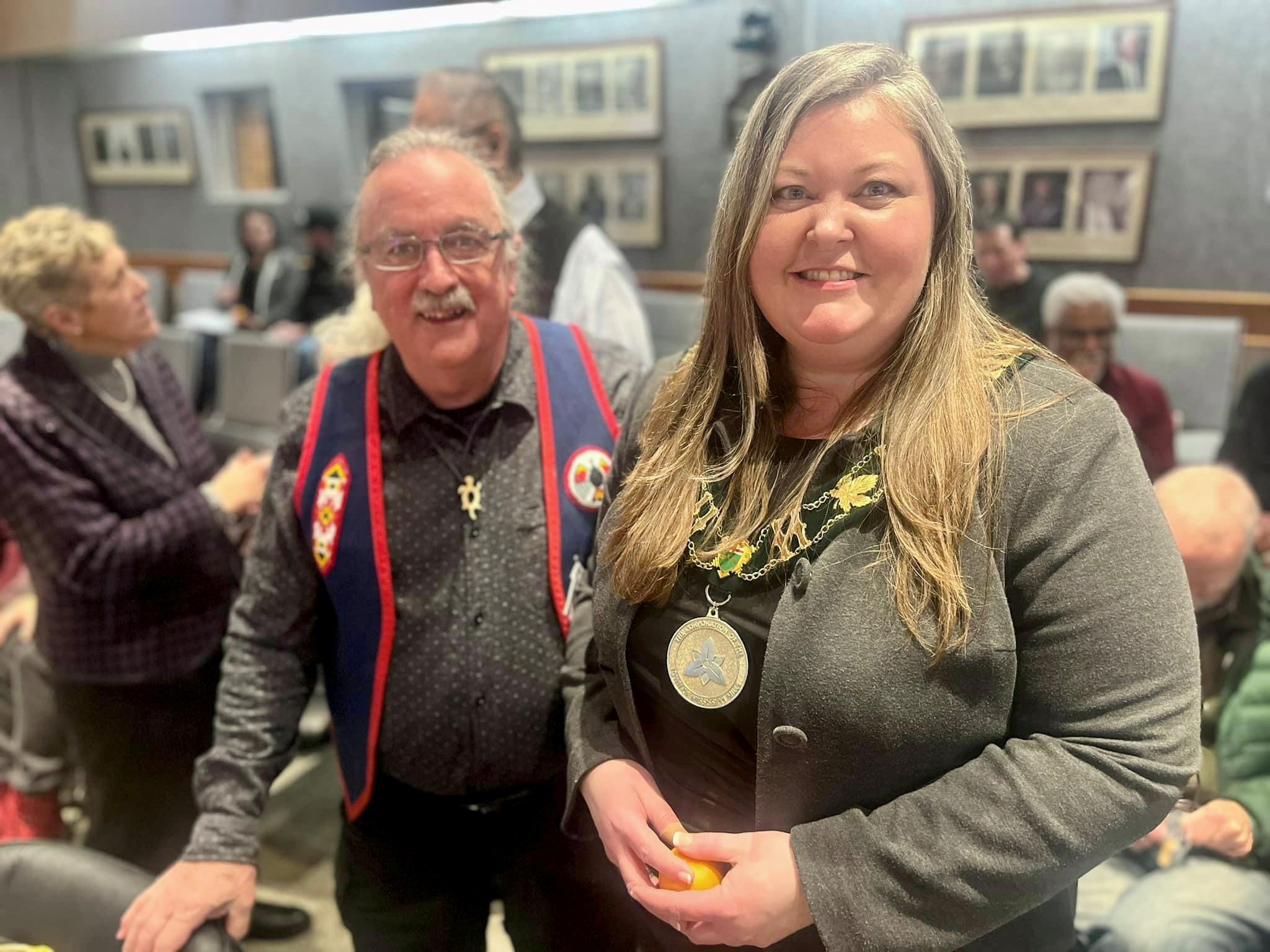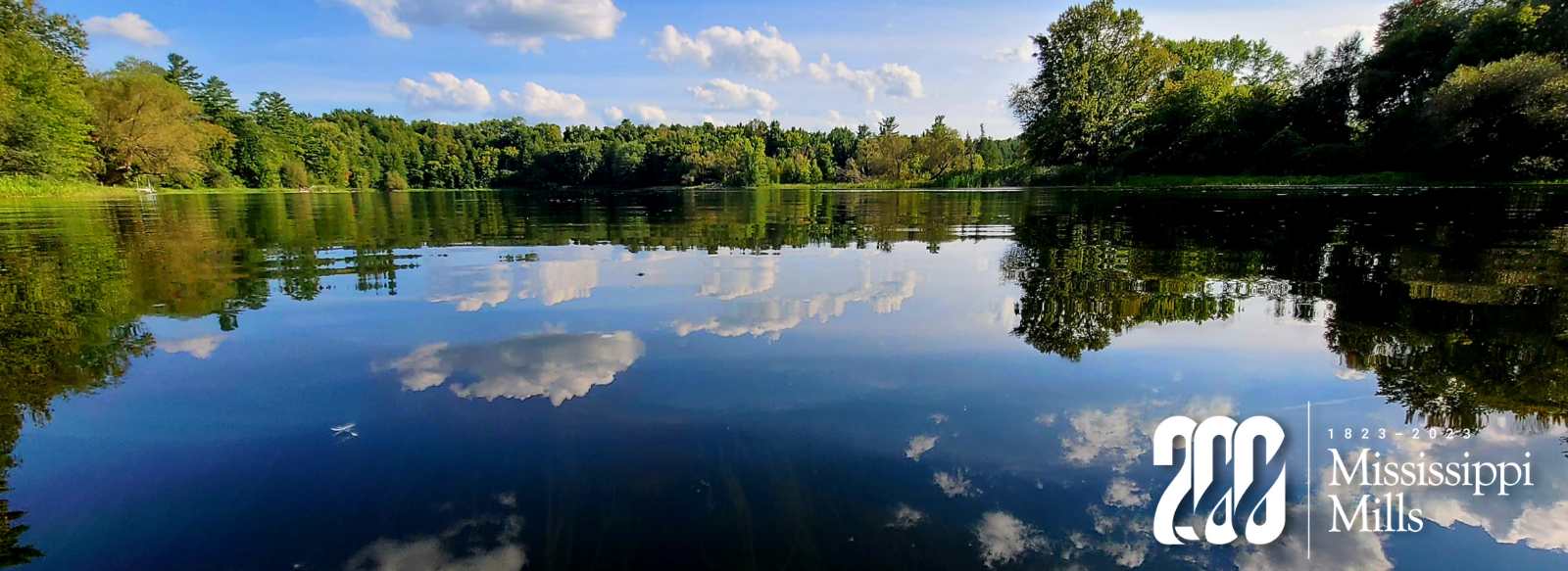Indigenous Story

Above is Indigenous artist, Nish Nabie, displaying some of his carvings that will be cast in bronze for the Seven Gifts sculpture, a bicentennial project, going in Riverfront park in Almonte. With him are Bev Hunter and Sue Evans, members of the Mississippi Mills All My Relations group which is focused on Truth and Reconciliation.
Mississippi Mills is located on the traditional unceded lands of the Algonquin people. The Mississippi River that runs through it was an important canoe route where people traveled to seasonal harvesting areas for wild rice, berries, game, portaged by the falls, fished etc. Although the Crown had guaranteed in 1763 that these lands would remain in the possession of the Algonquins, the British government in 1783 chose to ignore this promise and encouraged settlement here by Loyalists fleeing the United States.
In 1822, the year before Ramsay (which is part of Mississippi Mills) was established, the British sold most of what remained of the traditional Algonquin land in the Ottawa Valley. No one bothered to consult the Algonquin who had never surrendered their claim to the area.
As settlers arrived to establish thriving textile industries on the river, they encroached on the camping sites of the Algonquin people and displaced them. In 1873, Thomas Nuggent sold approximately 1½ acres of his land to the Roman Catholic Episcopal Corporation Diocese of Ottawa for use as an RC cemetery in Pakenham a top a small hill about 4 kms south of village of Pakenham. Indian Creek runs into the Mississippi River close to its base.
When they began to develop the cemetery, many skulls with long black hair were found and it was discovered that it was the site of an old Indigenous burial ground. An epidemic of fever/influenza brought by European settlers had wiped out many of the tribes camped along the river and the deceased had been buried high on the hill where no water could mar their graves.
Today most people living here are not aware of this history or indeed of the presence of Algonquin people living in Lanark county - only that, for instance, 'Indian River' runs through the municipality and that there is a site between Almonte and Pakenham referred to as 'Indian Hill'.
...........................
The area known today as Mill Run in Almonte, was once 'an Indian fort created to protect the wigwams and tepees from hostile raiding parties along the Mississippi river'. Here is the article in the Ottawa Journal referencing the history.
Here's another article discussing the long history of the Algonquin people in the Ottawa Valley.
Above is Mayor Lowry with Elder Larry McDermott, from Shabot Obaadjiwan First Nation, who performed a smudging ceremony at the launch of the bicentennial.
The bicentennial celebrations are highlighting the importance of Indigenous history in the area. The Seven Gifts sculpture is being installed in Riverfront park, an indigenous flagpole is being erected at the municipal office and various other events and activities are being planned.












